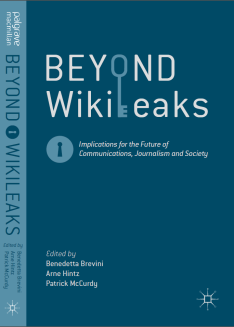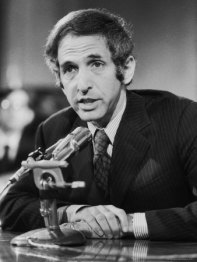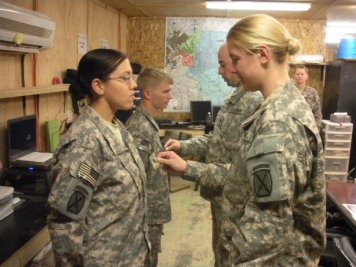After prolonged detainment and harsh, punitive and even unlawful pre-trial punishment, Bradley Manning’s court martial started this week in Fort Meade, Maryland. The court martial is part and parcel of the wider ‘WikiLeaks Moment’ we are living through. Attempting to make sense of history as it unfolds before us is a perilous task. That said, yesterday I published a post on the uOttawa Expert blog on the start of Bradley Manning’s court martial. As the post had a strict limit of 400 words, I wanted to take the opportunity to expand on some aspects of the Manning case which deserve more attention. Thus what will do is offer a series of blog posts over the next couple weeks briefly exploring themes related to the case of Bradley Manning including three themes: 1) Analog versus Digital Whistleblowing – Ellsberg versus Manning, 2) Whistleblower Smackdown and Crackdown 3) Crowd-Sourced Journalism in a time of Secrecy.
Today’s blog post explores the first theme:
Analog versus Digital Whistleblowers – Daniel Ellsberg versus Bradley Manning
There is no question that US Army Private Bradley Manning facilitated the biggest leak of government information of our time by providing material to the online whistle-blowing organization WikiLeaks. Prior to Manning, it was Daniel Ellsberg’s leak of what became known as the ‘Pentagon Papers’ which held this record. The cases of Manning and Ellsberg are fascinating for both their similarities and differences. To fully understand the differences and thus understand whistleblowing in a digital age, we need to pay attention to the men and the environment they worked in.
Daniel Ellsberg was the consummate insider. A former Marine, Ellsberg earned his PhD from Harvard and was working at the top of his profession. Ellsberg had some of the highest security clearance in the United States (equivalent to a two star general) and was one of only a handful of people with access to the complete Pentagon Papers report known officially as “United States – Vietnam Relations, 1945–1967: A Study Prepared by the Department of Defense”. Not only that, as the report was classified “Top Secret-Sensitive”, RAND employees were only supposed read classified documents in a Top Secret Control Room that is, you were senior enough to have a top secret document safe in your office. Ellsberg indeed had a top secret document safe and it was twice the size of the regular issue safe.
Given the sheer volume of the Pentagon Papers (7000 pages), preparing the documents for their eventual leak was a laborious and very much analogue process. Briefly it involved, Ellsberg hiding volumes of the study in his briefcase, walking out the Rand front door past security and covertly photocopying the study at night at the office of a friend’s advertising agency. Not only would Ellsberg and his helpers need to photocopy each page but, do this twice. Once to get a copy of the page, then the “top secret” stamp would be cut off the photocopied page to make the document seem less conspicuous at which point it would be photocopied again. The process was laborious, time consuming and was undeniable facilitated by Ellsberg’s insider status.
While Daniel Ellsberg was at the top of the information food chain for his time, Private Manning was at the bottom. Two years after enlisting in the US army, Private First Class Manning was deployed to Forward Operating Base (FOB) Hammer, 40 miles east of Baghdad Manning where he worked as an intelligence analyst. Private Manning worked inside FOB Hammer’s Sensitive Compartmented Information Facility (SCIF) which was essentially a room which met the US government’s standards for handling classified information.
As part of his job, PFC Manning had Top Secret – Sensitive Compartmented Information (TS-SCI) clearance which allowed him to work at a SCIF computer terminal with access to SIPRNET the source of the diplomatic cables and other files published by WikiLeaks. Manning was not alone in his access to the SIPRNET but was a node in a vast industry of networked individuals. While the US government will not confirm numbers, the BBC has estimated that approximately “2.5 million US military and civilian personnel” can access SIPRNET”(BBC 2010). Consequently PFC Manning’s network access – along with at least 2.5 million fellow security-cleared individuals – must not be seen as an exception, but as typical of military work in the network society.
The rise and reach of SIPRNET and the related digitalisation and networking of US government and military resources epitomises Manuel Castells’ “network society”. It also accounts for how such a low level analyst could have access to such a vast trove of information.
This ease of digital access was also magnified in the wake of the 2001 September 11th terrorist attacks when the 9/11 Commission concluded that a key factor not preventing 9/11 was too little information sharing. This finding set into motion a series of government initiatives to tear down information silos, share information and balloon resources dedicated to generating, gathering and sharing such information.
With unprecedented numbers of people having access to the U.S. government’s network of classified information, there was a shift from information being concentrated in the hands of insiders, to being shared with a vast, global network of security-cleared personnel. With this, the potential for leaking becomes democratised, open to anyone within network access, motive and opportunity.
In Conclusion…
 For those interested in more detail on some of the topics discussed above, especially parallels and striking contrasts between the Ellsberg and Manning cases, I dedicate a chapter in my new co-edited book Beyond WikiLeaks: Implications for the Future of Communications, Journalism and Society (Palgrave, 2013, co-edited with Arne Hintz and Benedetta Brevini). Other prominent academics, experts and insiders also join in the effort to explore what WikiLeaks means for journalism, freedom of expression, policy-making and democracy. What ties the book together is a shared view that the case of WikiLeaks embodies many of the pressing social struggles and dilemmas of age.
For those interested in more detail on some of the topics discussed above, especially parallels and striking contrasts between the Ellsberg and Manning cases, I dedicate a chapter in my new co-edited book Beyond WikiLeaks: Implications for the Future of Communications, Journalism and Society (Palgrave, 2013, co-edited with Arne Hintz and Benedetta Brevini). Other prominent academics, experts and insiders also join in the effort to explore what WikiLeaks means for journalism, freedom of expression, policy-making and democracy. What ties the book together is a shared view that the case of WikiLeaks embodies many of the pressing social struggles and dilemmas of age.
In the meantime the case of Bradley Manning continues to unfold and while the government has refused to make transcripts of Bradley Manning’s court martial publically available an excellent imitative by Press Freedom Foundation has seen the crowd funding of a court stenographer. Regardless of your opinion about what Bradley Manning, it is important to have a historical record. You may read the transcripts and support the initiative on the Press Freedom Foundation webpage.


